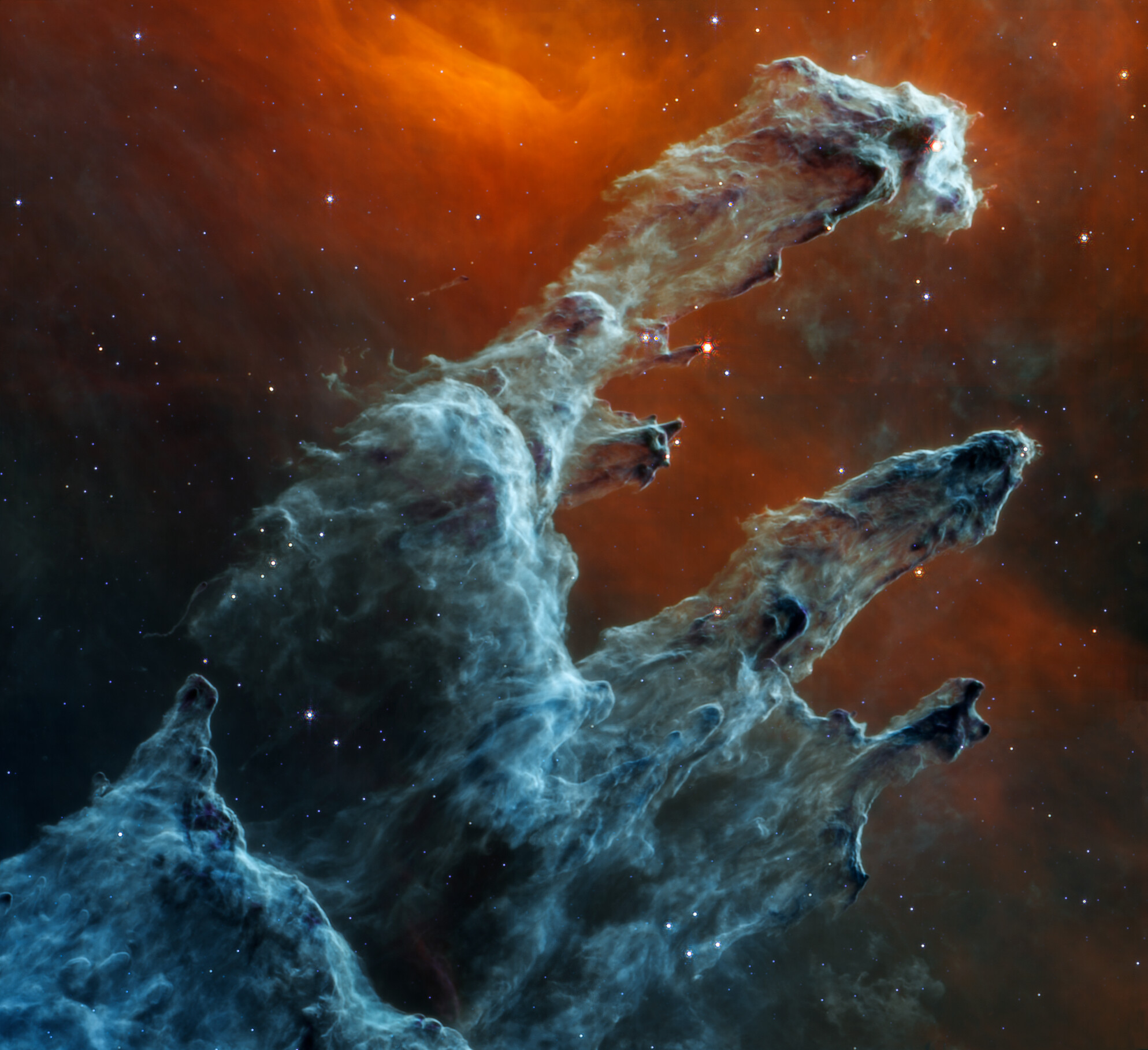James Webb Space Telescope snaps new, super-spooky image of Pillars of Creation
"Thousands of stars that exist in this region disappear from view."
This gloomy view of an iconic space dust structure is just the Halloween mood we need.
James Webb Space Telescope scientists have released a second view of the iconic Pillars of Creation, this one peering deep into the mid-infrared. The dust clouds appear to glow in blue tinges, and loom in front of a red-hued background.
"Thousands of stars that exist in this region disappear from view — and seemingly endless layers of gas and dust become the centerpiece," European Space Agency officials wrote Friday (Oct. 28) of the fresh image.
Dust, officials added, is an essential ingredient for star formation and helps scientists figuring out the formation and evolution of the structure, which is located in the constellation Serpens, some 7,000 light-years away from Earth.
Related: The James Webb Space Telescope never disproved the Big Bang. Here's how that falsehood spread.

"Many stars are actively forming in these dense blue-grey pillars. When knots of gas and dust with sufficient mass form in these regions, they begin to collapse under their own gravitational attraction, slowly heat up, and eventually form new stars," ESA officials said in the same statement.
It was the venerable Hubble Space Telescope that first observed the column-like clouds in interstellar space a generation ago. That observatory, which remains active and healthy, has revisited the 1995 image several times. But Hubble and Webb are tuned to different types of light.
Get the Space.com Newsletter
Breaking space news, the latest updates on rocket launches, skywatching events and more!
That's the difference in the two recent photos as well: The new imagery from Webb's Mid-Infrared Instrument follows an image from its Near-Infrared Camera (NIRCam) released earlier this month. Both photos also showcase the pillars in much more detail than is possible with Hubble, thanks to Webb's bigger mirror and deep-space outpost.
The NIRCam image shows off the cloud's structure, as well as numerous stars that were invisible in previous images that were formed only a few hundred thousand years ago, NASA said in a statement at the time.
Elizabeth Howell is the co-author of "Why Am I Taller?" (ECW Press, 2022; with Canadian astronaut Dave Williams), a book about space medicine. Follow her on Twitter @howellspace. Follow us on Twitter @Spacedotcom or Facebook.
Join our Space Forums to keep talking space on the latest missions, night sky and more! And if you have a news tip, correction or comment, let us know at: community@space.com.

Elizabeth Howell (she/her), Ph.D., was a staff writer in the spaceflight channel between 2022 and 2024 specializing in Canadian space news. She was contributing writer for Space.com for 10 years from 2012 to 2024. Elizabeth's reporting includes multiple exclusives with the White House, leading world coverage about a lost-and-found space tomato on the International Space Station, witnessing five human spaceflight launches on two continents, flying parabolic, working inside a spacesuit, and participating in a simulated Mars mission. Her latest book, "Why Am I Taller?" (ECW Press, 2022) is co-written with astronaut Dave Williams.








